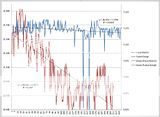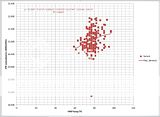michael
Well-known member
I don't trust the ETE estimate, however in my case it overstates the battery capacity compared to an actual test.
I would suggest you both do a full-blast-heater rundown test, and then let is know the measured battery capacity and the reported ETE when fully charged.
Hybridbear: my guess is that your reported ETE is a little higher than what a test would measure
Breeves: my guess is that your reported ETE is lower than what a test would measure...16.4 kWh battery capacity at 17K miles doesn't seem right.
I would suggest you both do a full-blast-heater rundown test, and then let is know the measured battery capacity and the reported ETE when fully charged.
Hybridbear: my guess is that your reported ETE is a little higher than what a test would measure
Breeves: my guess is that your reported ETE is lower than what a test would measure...16.4 kWh battery capacity at 17K miles doesn't seem right.


